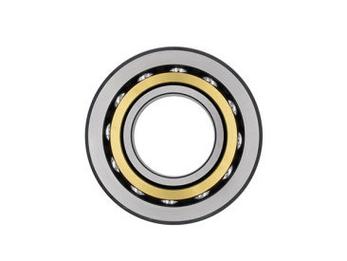Types of Ball Bearings and Their Uses: A Comprehensive Guide
Ball bearings are precision-engineered components designed to reduce rotational friction while supporting axial and radial loads. They play critical roles in automotive systems, industrial machinery, aerospace equipment, and everyday appliances by enabling smooth motion transfer between mechanical parts.
Table of Contents
1. Deep Groove Ball Bearing Applications2. Angular Contact Bearing Advantages
3. Thrust Ball Bearing Specifications
4. Self-Aligning Bearing Benefits
5. Miniature Ball Bearing Uses
1. Deep Groove Ball Bearing Applications

Deep groove ball bearings constitute the most versatile category, handling both radial and axial loads through continuous raceway grooves. Their simple design makes them ideal for high-speed applications like electric motors (up to 15,000 RPM) and automotive alternators. Industrial pumps utilize sealed variants for contamination resistance, while double-row versions support heavier loads in gearboxes. These bearings maintain dimensional stability across temperature ranges from -30°C to 120°C, with advanced ceramic hybrids extending operational limits.
2. Angular Contact Bearing Advantages
Angular contact bearings feature angled contact surfaces (15°-40°) that excel in combined load scenarios. Single-row designs dominate machine tool spindles requiring extreme precision, while double-row configurations handle thrust-intensive applications like helicopter rotor assemblies. The preload adjustment capability allows precise control over axial rigidity, critical in robotics and CNC equipment. High-speed variants incorporate special cage materials like polyamide for reduced friction at 20,000 RPM operations.
3. Thrust Ball Bearing Specifications
Thrust ball bearings specialize in axial load management through washer-like components. Flat-race designs handle moderate loads in crane hooks and turntables, while spherical-race versions compensate for shaft misalignment in marine propulsion systems. The automotive sector employs them in clutch release mechanisms, rated for 5kN-50kN dynamic load capacities. High-temperature variants using tool steel races operate in furnace conveyor systems up to 300°C. Proper lubrication intervals (every 500-2000 hours) prevent premature wear in heavy-duty applications.
4. Self-Aligning Bearing Benefits
Self-aligning bearings incorporate spherical outer races that tolerate 3°-5° shaft misalignment, crucial in agricultural machinery and paper mill rollers. The dual-row ball arrangement maintains performance despite installation inaccuracies common in conveyor systems. Mining equipment utilizes large-diameter variants (up to 2m) with reinforced cages for shock load resistance. Food processing applications benefit from stainless steel versions with IP69K sealing, while textile machinery uses open designs for easy cleaning.
5. Miniature Ball Bearing Uses
Miniature bearings (1mm-10mm bore sizes) enable precision motion in medical devices like dental handpieces (400,000 RPM) and robotic surgical arms. The electronics industry employs them in cooling fan motors with noise levels below 15dB. Aerospace applications demand hybrid ceramic bearings for satellite antenna positioning systems, offering vacuum compatibility and non-magnetic properties. Special lubricants maintain performance across -60°C to 150°C in drone gimbal mechanisms, while shielded variants protect internal components in 3D printer extruders.
Understanding these bearing types helps engineers select optimal solutions for specific operational demands. From high-speed robotics requiring angular contact precision to heavy machinery needing self-alignment capabilities, each variant addresses unique challenges. Proper maintenance practices like lubrication management and load monitoring significantly extend service life. Explore our technical specifications to match bearing characteristics with your equipment requirements.
In conclusion, ball bearing selection directly impacts machinery efficiency and longevity. The right type reduces energy consumption by 15-30% while preventing premature component failure. Always consider load directions, rotational speeds, environmental conditions, and maintenance requirements when specifying bearings for industrial applications.




 13869596835
13869596835